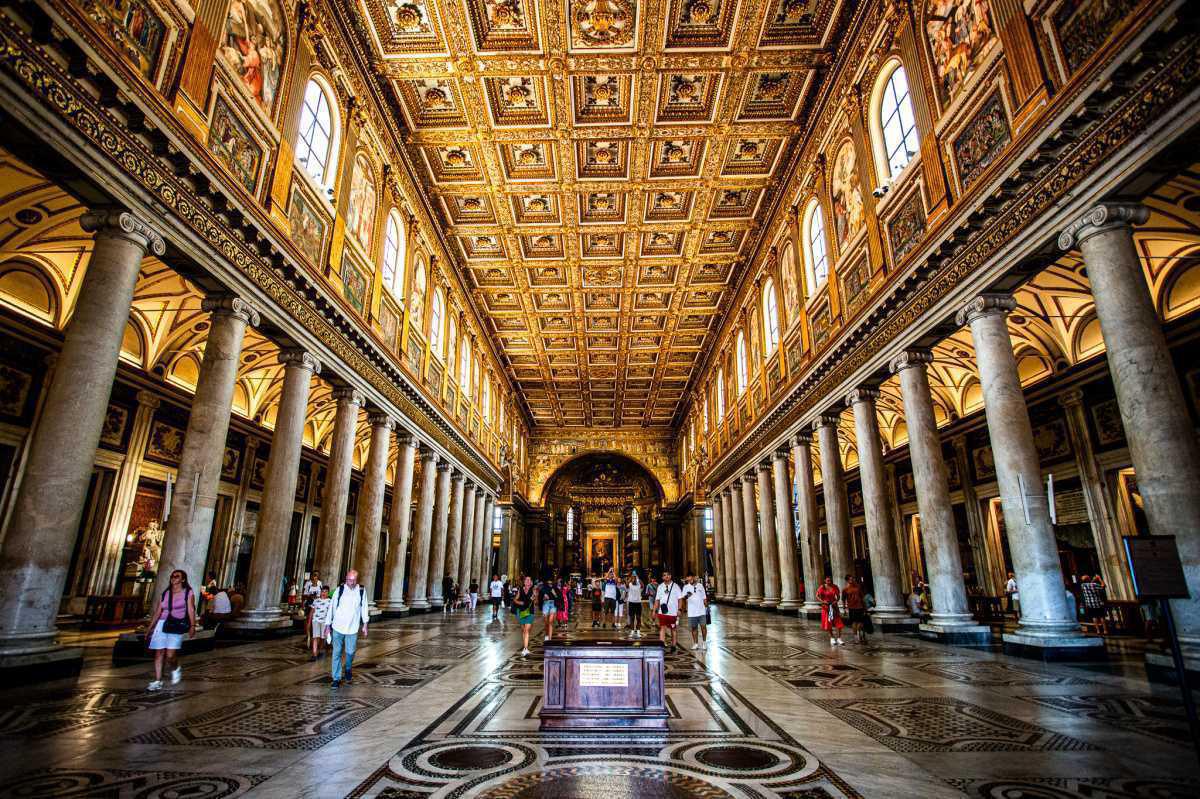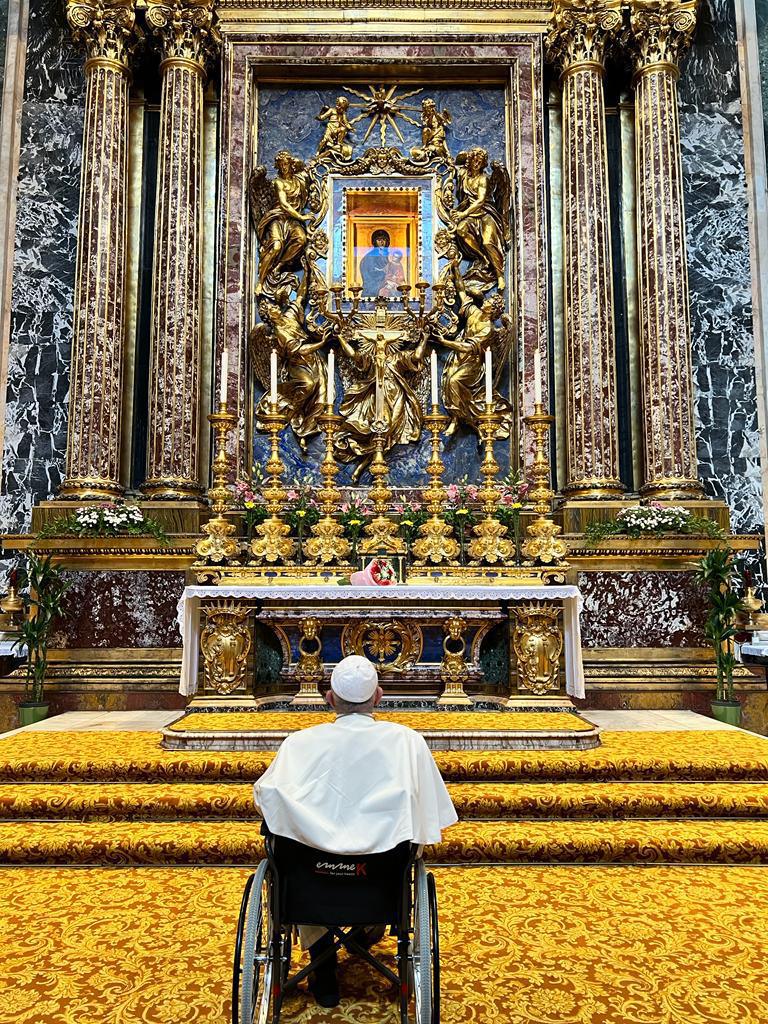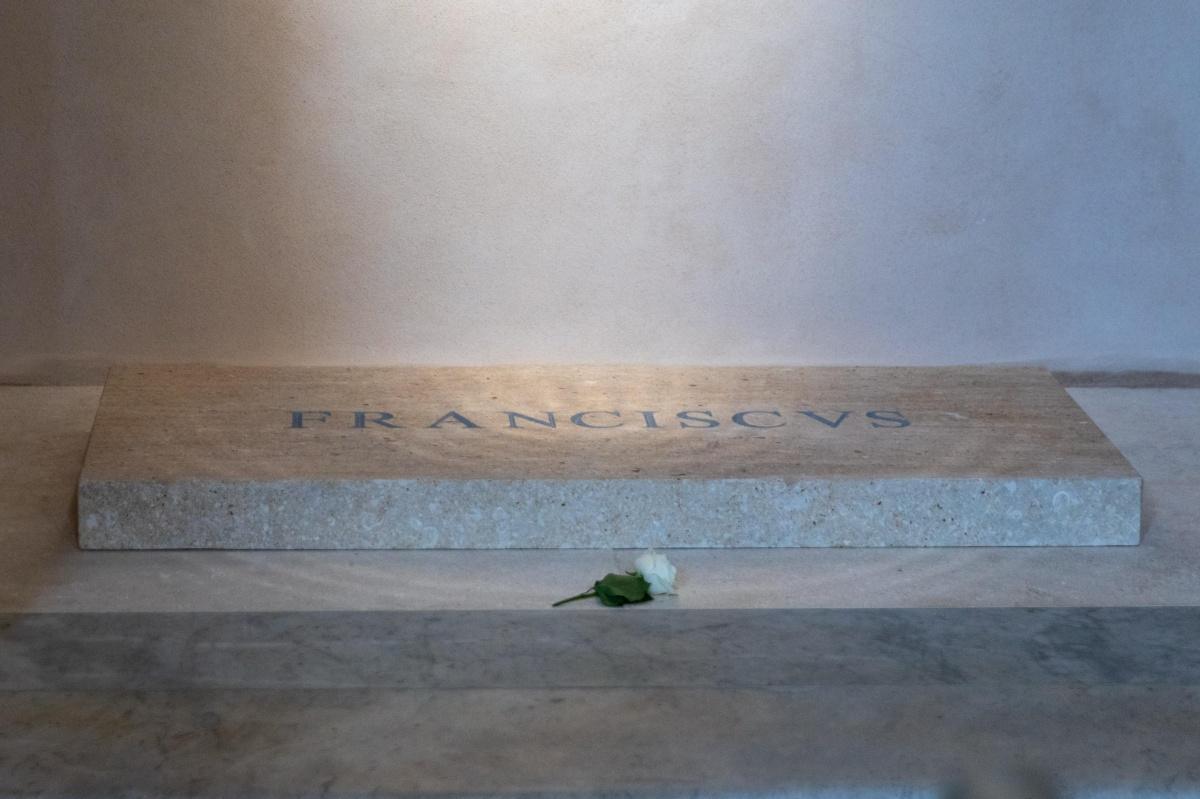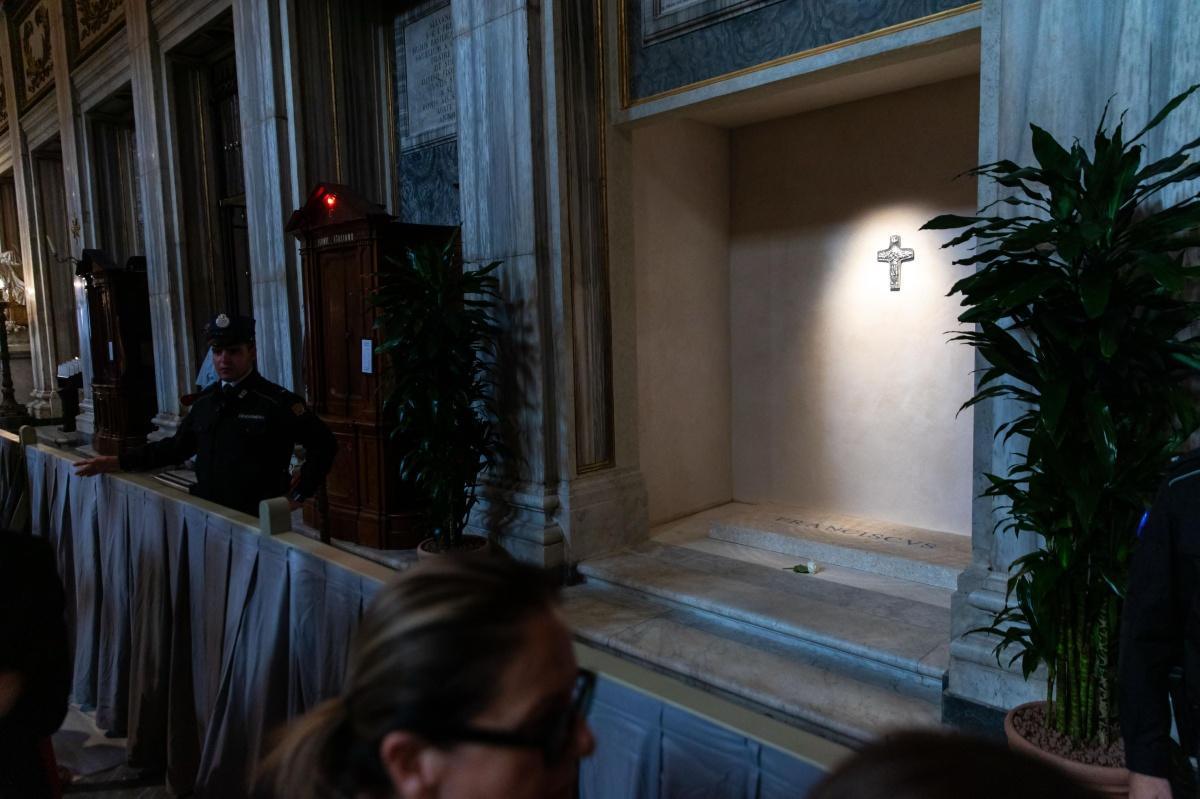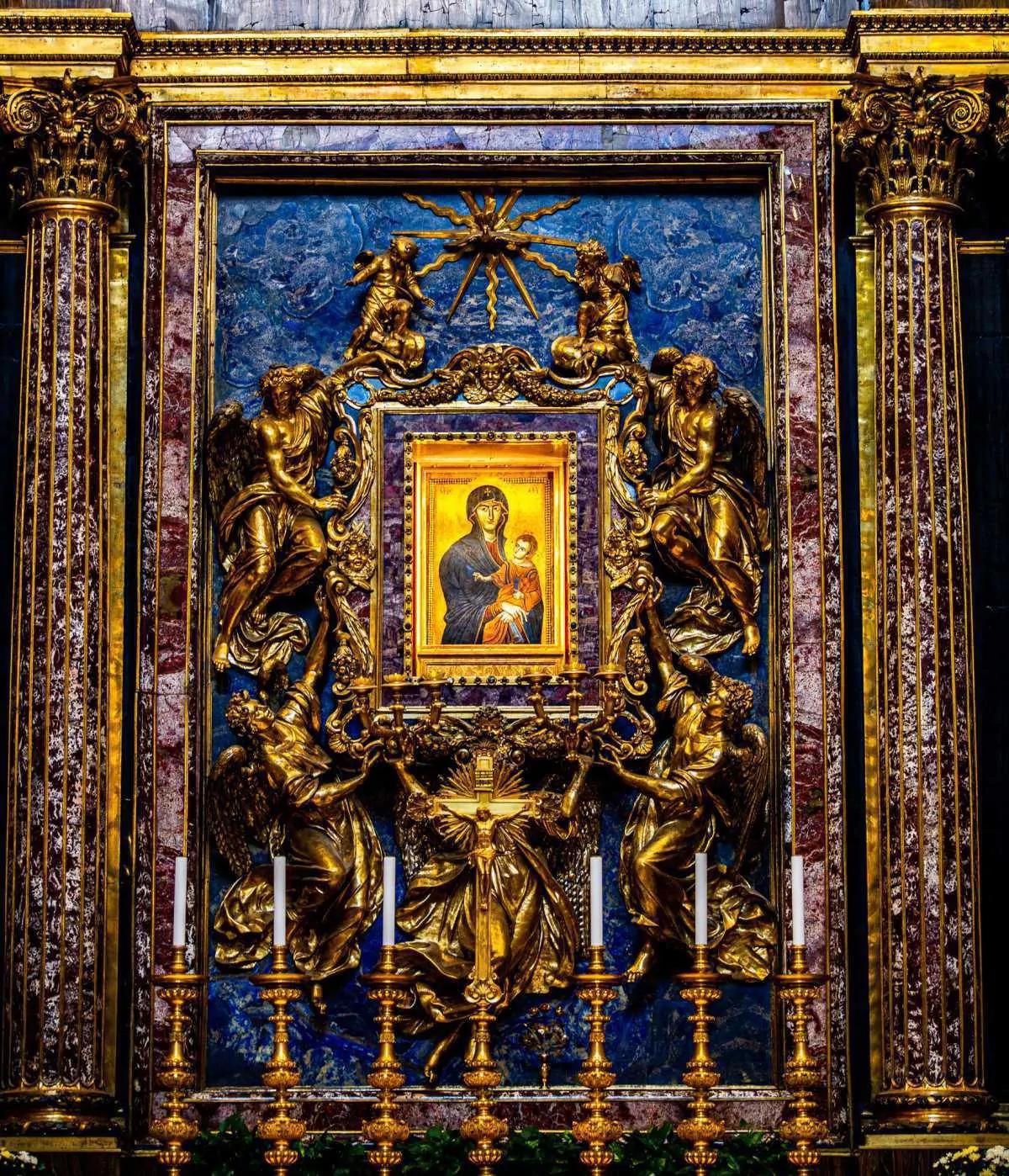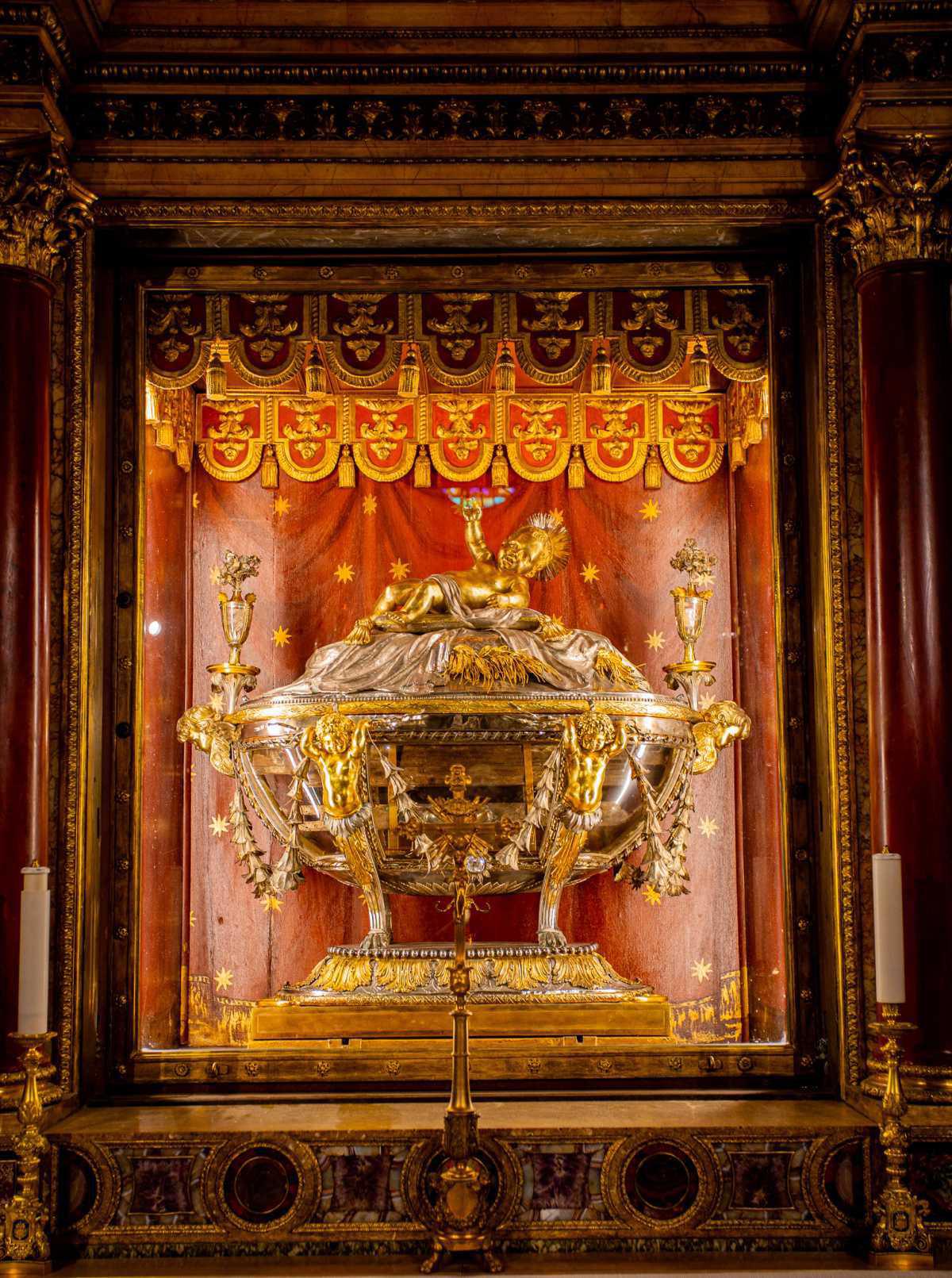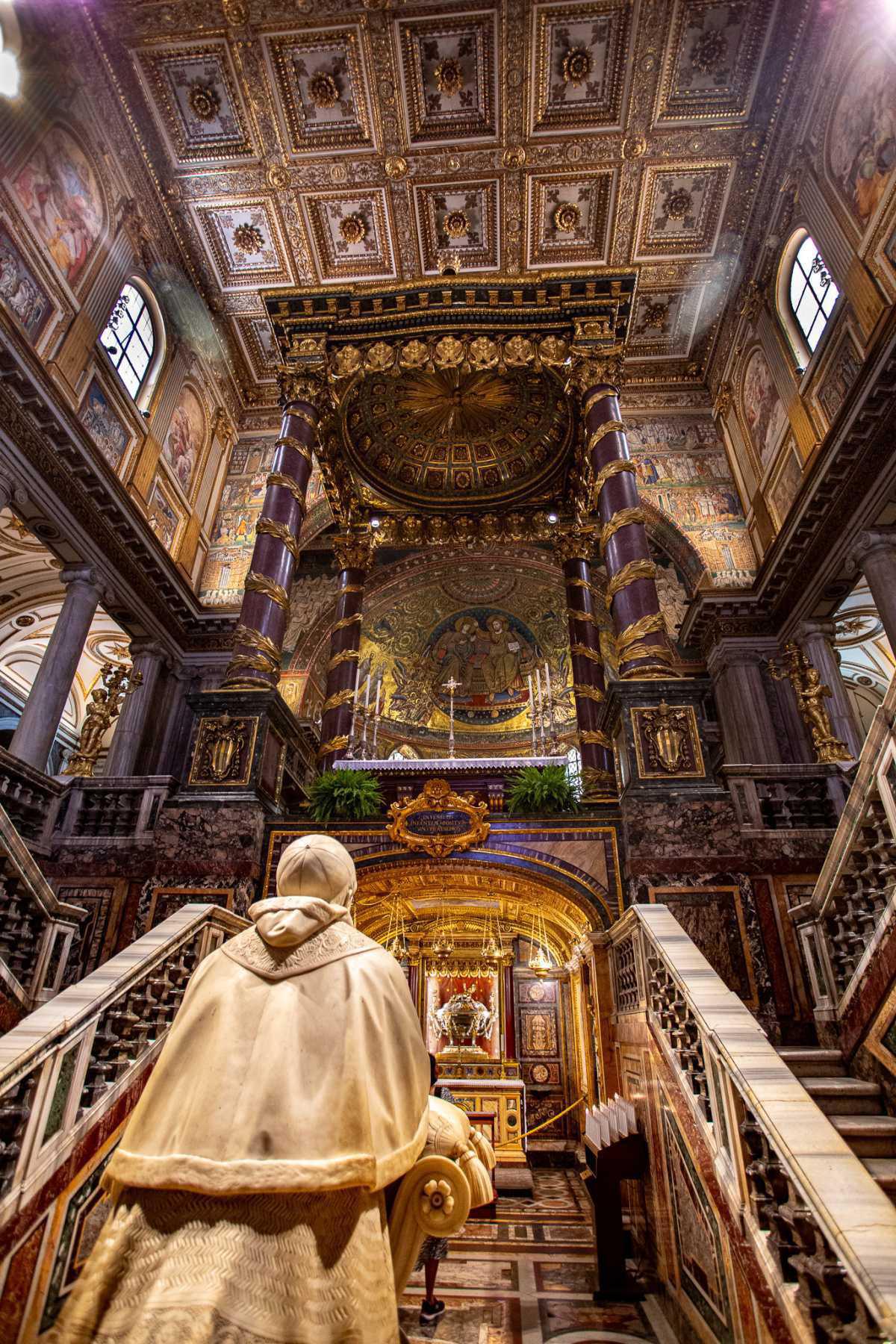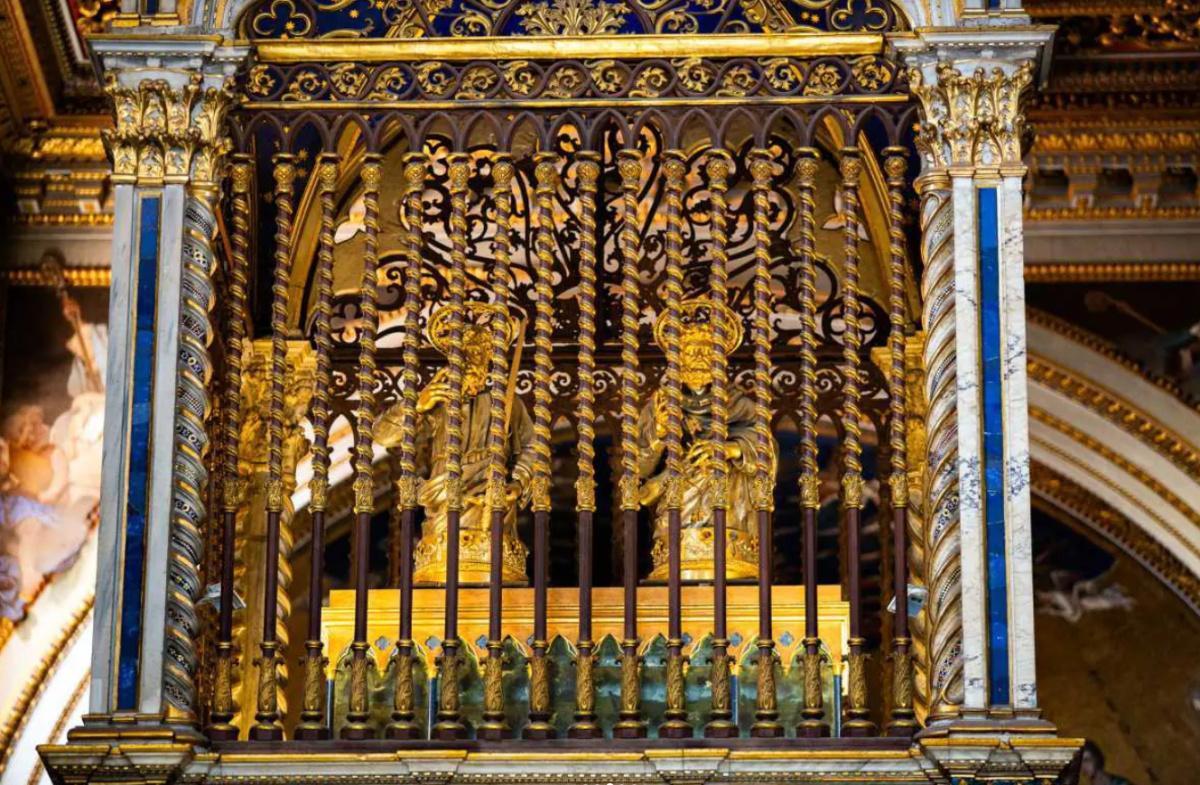
Papal Basilica of St. Mary Major (Santa Maria Maggiore)
P.za di Santa Maria Maggiore Roma Roma
The Papal Basilica of Saint Mary Major, the first Marian shrine of Christendom, stands as a sanctuary of miracles and a beacon of devotion to the Blessed Virgin. According to tradition, the basilica was founded following a miraculous snowfall on August 5th, 358 AD, an event commemorated each year as white rose petals gently descend from the ceiling during the Feast of Our Lady of the Snows.
Beneath its golden ceiling—adorned with the first gold brought from the New World by Columbus—rest the tombs of popes, alongside Saint Jerome, the translator of the Latin Vulgate, and Gian Lorenzo Bernini, the master sculptor of St. Peter’s Square.
Pilgrims descending into the Crypt of the Nativity can venerate what is believed to be a relic of the very manger where the infant Jesus was laid. From its miraculous origins to its enduring role as a center of Marian devotion, Saint Mary Major stands as a testament to the Church’s deep love for the Mother of God and the divine mysteries she enfolds.
Pope Francis is buried in a niche on the side of the church next to the Pauline Chapel. Above the altar of the chapel lies the revered icon Salus Populi Romani, Rome’s most venerated image of the Blessed Virgin Mary. Tradition holds that this sacred icon, attributed to Saint Luke, has safeguarded the city for centuries, interceding in times of plague, war, and hardship. The Holy Father always visited this chapel and asked for Our Lady's Intercession before and after papal trips to entrust every voyage to her maternal care.
The tomb should be in the ground; simple, without particular ornamentation, bearing only the inscription: Franciscus.
His decision and instructions for burial at the St. Mary Papal Basilica can be found in his Final Testament. He was laid to rest shortly after his funeral after his remains were processed from St. Peter's Square to the St. Mary Major in a white pope mobile, in a trip many call 'Francis' Final Journey'. Watch the Procession.
The Basilica of St. Mary Major in Rome is one of the four major papal basilicas and is full in history, relics, and artistic works. To get the full story, watch the EWTN Vaticano 30 minute Special about the Papal Basilica of Santa Maria Maggiore.
To receive a piece by piece tour of the basilica, see the following clips from the episode.
The Pauline Chapel: A Baroque Masterpiece in Saint Mary Major featuring the Salus Populi Romani Icon
The Pauline Chapel (Cappella Paolina) – Commissioned by Pope Paul V (1605–1621) , this ornate chapel contains the venerated Salus Populi Romani icon, an ancient image of the Virgin Mary holding the Christ Child. Tradition holds that this icon was painted by St. Luke the Evangelist and brought to Rome by St. Helena, the mother of Emperor Constantine. The icon is deeply venerated, and popes, especially Pope Francis, who visited it before and after every papal trip.
The chapel is designed in the extravagant Baroque style, with abundant use of gold, marble, and intricate frescoes. The ceiling and dome are richly adorned with gilded stucco and frescoes that celebrate the Virgin Mary.
The chapel serves as the final resting place of Pope Paul V, who commissioned its construction. His tomb is an elaborate structure, featuring sculptures and reliefs dedicated to his legacy.
The chapel’s frescoes were painted by Guido Reni and Cavalier d’Arpino, two renowned Baroque artists. The artwork emphasizes Marian themes, celebrating the Virgin Mary's role in salvation history.
The Pauline Chapel remains a place of prayer and pilgrimage, especially for those devotions to praying the holy rosary and asking the Blessed Virgin Mary for her intercession.
Sistine Chapel of St. Mary Major
Not to be confused with the Vatican’s, this chapel, commissioned by Pope Sixtus V, houses the tombs of Popes Sixtus V and Pius V and features stunning frescoes by Cesare Nebbia and Giovanni Guerra.
The chapel was designed by Domenico Fontana, a leading architect of the late Renaissance period. Its architectural style reflects the transition from Renaissance to Baroque, with a focus on grandeur and ornamentation. The interior is lavishly decorated with marble, gilded stucco, and intricate frescoes that highlight biblical themes and the role of the Virgin Mary.
In the centre is a notable gilded bronze tabernacle. Crafted by Ludovico del Duca, this tabernacle serves as a central theological element of the chapel. It is supported by four gilded bronze angels, sculpted by Sebastiano Torregiani, who hold up the ciborium—a model of the chapel itself.
The Crypt of the Nativity - Relics of the Holy Crib
Located beneath the high altar, this crypt is said to contain relics of the Holy Crib, fragments of the manger in which Jesus was laid at birth in Bethlehem.
The relics are housed in a crystal reliquary designed by the artist, Giuseppe Valadier. How the relics were brought to Rome is not definitively documented, but one tradition suggests that they were transported from the Holy Land during the pontificate of Pope Theodore I (642–649), who was of Greek origin and had strong connections to the Eastern Church. The basilica thus earned the title Sancta Maria ad Praesepe ("Saint Mary of the Crib") during his pontificate since he was a native of Jerusalem and was asscoiated with these revered relics.
Another tradition holds that the relics were brought to Rome by St. Jerome, the 4th-century Doctor of the Church known for translating the Bible into Latin (the Vulgate), whose remains are also interred within the basilica.
Prayer
O Blessed Virgin Mary,
Honored in the sacred walls of the Papal Basilica of Saint Mary Major,
first Marian shrine of Christendom,
I come before you with a heart full of devotion and love.
Mother of God, Queen of Heaven,
guide me with your gentle hand towards your Son, our Lord Jesus Christ.
In the beauty of this holy place,
I seek refuge and strength,
trusting in your intercession and grace.
May the peace and purity of your presence
inspire me to live a life of faith, hope, and charity.
Help me to follow your example of humility and obedience,
as I strive to grow closer to Christ each day.
Holy Mary, Mother of the Church,
pray for me and lead me always to your beloved Son.
In this sacred sanctuary,
may my prayers be heard and answered,
according to God’s holy will.
Amen.
Recommended Nearby:
Basilica of San Giovanni in Laterano
As the cathedral of Rome and the official seat of the Pope, this basilica shares Saint Mary Major’s status as one of the four major papal basilicas. Both churches reflect Rome’s deep ecclesiastical history and have undergone significant architectural transformations over the centuries.
See Also:
Papal Basilicas Tour
Located throughout Rome, each papal basilica carries a rich story with many pilgrims to Rome making the journey to each one before choosing a favorite. By passing through the Holy Door of any of these basilicas, it is possibe to receive a plenary indulgence during the 2025 Jubilee Year.
Stay Connected:
Sign up and get weekly updates with new locations, intenaries and videos.
How to Locate the Restrooms
The restrooms at Santa Maria Maggiore are located on the right side of the basilica. To access them, go through the baptistry; the entrance is near the gift shop.
